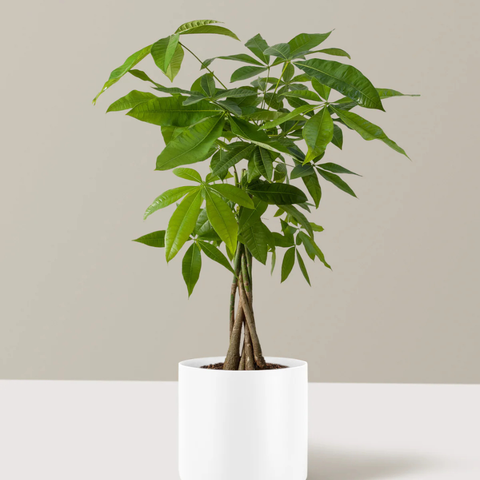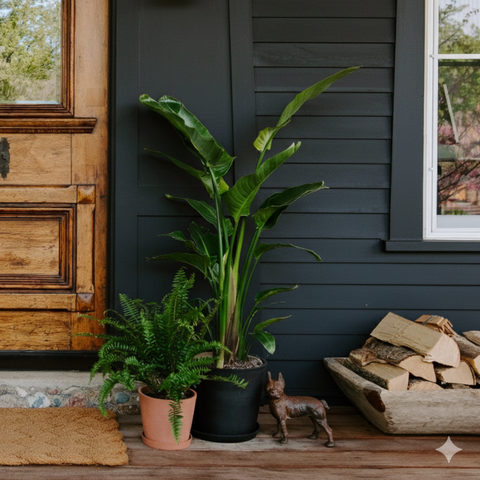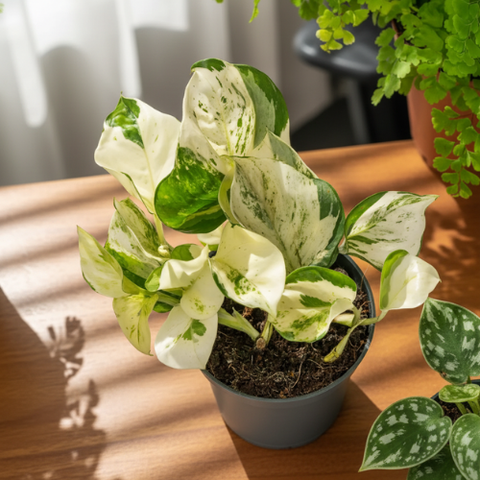The money tree (Pachira aquatica) has become a beloved houseplant, prized not only for its supposed ability to bring good fortune but also for its striking braided trunk and lush, hand-shaped leaves. Whether you're a seasoned plant parent or just starting your indoor garden, mastering money tree care is refreshingly straightforward.
Light Requirements: Finding the Sweet Spot
- Bright, indirect light is ideal - place near east or west-facing windows with sheer curtains, or a few feet back from south-facing windows
- Avoid direct sunlight, which will scorch the leaves, causing brown spots and damage
- Signs of insufficient light include leggy growth and smaller, pale leaves
- Rotate monthly to ensure even growth and maintain the plant's sculptural shape
Watering: Less is More
The quickest way to kill a money tree? Overwatering. These tropical natives prefer their soil to dry out between waterings. Check the top 2-3 inches of soil with your finger—if it's dry, it's time to water thoroughly until liquid drains from the bottom. In winter, reduce watering frequency as growth slows. Yellow leaves often signal overwatering, while brown, crispy edges indicate underwatering.
Creating the Perfect Environment
Money trees thrive in average household temperatures between 65-75°F. They appreciate humidity but adapt well to normal indoor conditions. For an extra boost, group your money tree with other plants or place it on a pebble tray filled with water. Please keep it away from heating vents and air conditioners, which can cause stress and leaf drop.
Maintaining Shape and Organization
The braided trunk is purely aesthetic and requires no maintenance once established. However, pruning keeps your money tree looking its best. Pinch off new growth at the top to encourage bushier growth, and remove any yellowing or damaged leaves promptly. If your tree becomes lopsided, strategic pruning can restore balance. Always use clean, sharp scissors to prevent the spread of disease.
Feeding and Repotting
Feed your money tree monthly during spring and summer with a balanced liquid fertilizer diluted to half strength. Skip fertilizing in fall and winter when growth naturally slows. Repot every 2-3 years, or when roots emerge from the drainage holes, using a pot that is only 1-2 inches larger than the current one. Money trees prefer being slightly root-bound.
Common Issues and Quick Fixes
Dropping leaves usually indicates stress from overwatering, underwatering, or temperature fluctuations. Adjust your care routine and be patient—money trees are resilient. Brown leaf tips often point to low humidity or fluoride in tap water; try filtered water if this persists. Pest problems are rare, but watch for spider mites or mealybugs and treat with neem oil if needed.
The Bottom Line
Money trees are forgiving plants that reward basic care with years of beauty. By providing bright indirect light, practicing restraint with watering, and maintaining a stable environment, your money tree will thrive. Whether or not it brings financial prosperity, it will undoubtedly enrich your space with its tropical elegance and easy-going nature.





Comments (0)
There are no comments for this article. Be the first one to leave a message!